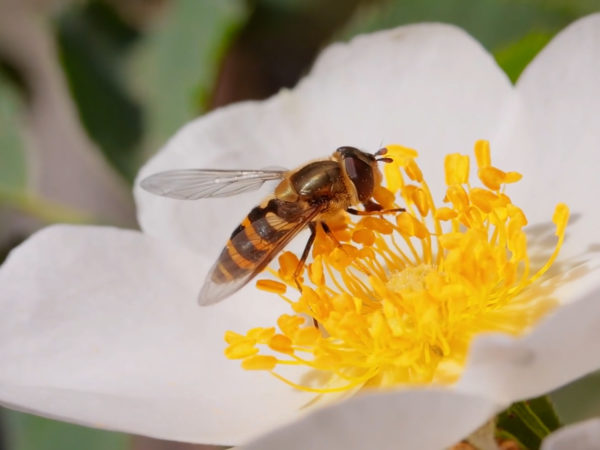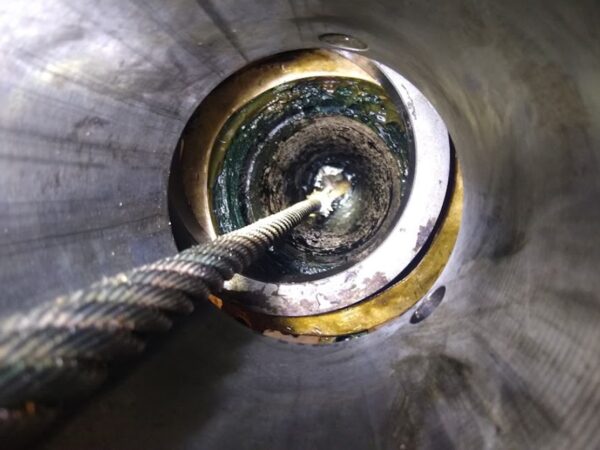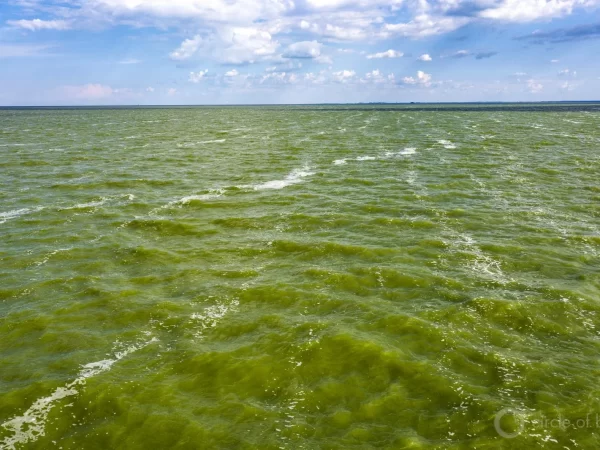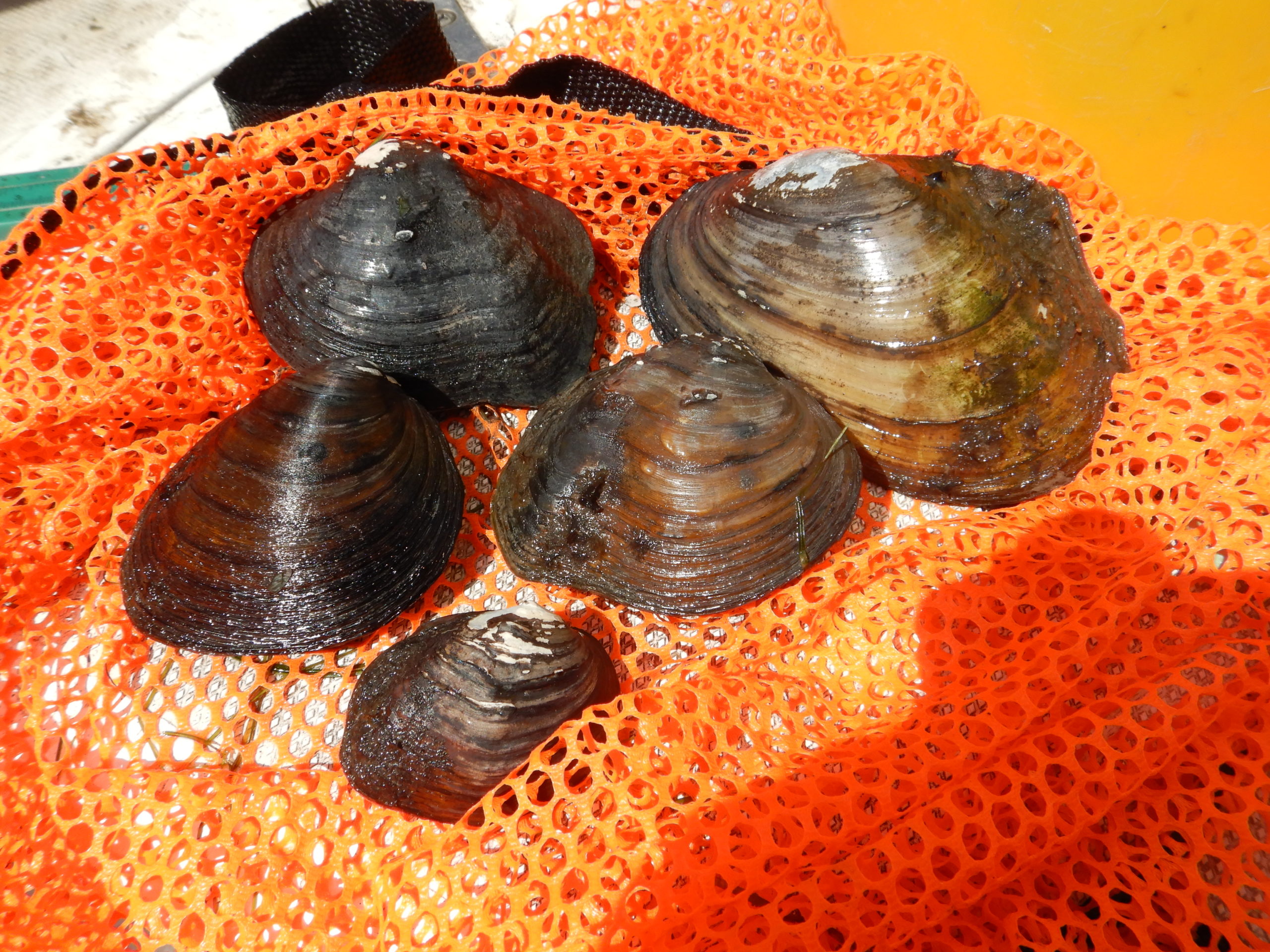
Great Lakes Moment is a monthly column written by Great Lakes Now Contributor John Hartig. Publishing the author’s views and assertions does not represent endorsement by Great Lakes Now or Detroit Public Television.
Native freshwater mussels have experienced dramatic population declines in the Great Lakes due to habitat degradation, water pollution and the introduction of invasive species like zebra and quagga mussels. Nowhere is this more evident than in the Detroit River.
However, Central Michigan University Ph.D. student Shay Keretz believes there is still hope and is focusing her dissertation on if and where native mussels remain in the Detroit and St. Clair Rivers and predicting, using a mathematical model, other refuge areas for these endangered and threatened species.
A freshwater mussel is a bivalved mollusk that has a shell made up of two halves or valves to the shell that protects its soft body parts. They are commonly called freshwater clams. Scientists often refer to them as “ecosystem engineers” because they modify aquatic habitats, making them more suitable for themselves and other organisms. Most live in flowing waters like rivers and streams.
The Detroit River had not been surveyed for mussels since 1998, until Keretz and her colleagues began looking in 2019. Many thought that native mussels had likely become extirpated or locally extinct.
“It was a surprise to find freshwater mussels were living in some areas of the Detroit River,” said Keretz. “Several of the native mussels found alive are listed as endangered, threatened or special concern species in Michigan and/or Ontario, demonstrating that the Detroit River still provides important habitat for biodiversity and at-risk species. I think the biggest surprise scientifically was finding a subfossil valve of the federally endangered Clubshell mussel up near Belle Isle, which was the first documented record of the species for the Detroit River.”
Freshwater mussels are the most imperiled group of animals in North America. Within the United States, there are about 300 species of freshwater mussels, and over half of them are having trouble. Of the 43 mussel species found in Michigan, 19, or 44%, are listed as either endangered or threatened under the Michigan Natural Resources and Environmental Protection Act of 1994. Five of these species are also federally listed and receive additional protection under the Endangered Species Act. An additional 12 species are in decline and are identified as “species of special concern.”
The primary reasons for the decline of these mussels include loss of habitat as a result of dam and road construction, stream channelization, water quality degradation, siltation, alterations to natural streamflow, and the introduction of non-native species such as zebra and quagga mussels.
Freshwater mussels have an unusual but close association with fish – a symbiotic relationship. In the mussels’ life cycle, males release sperm into the water that is drawn in by the females. The fertilized eggs are brooded in the female mussel’s gills, where they develop into tiny larvae called glochidia. The glochidia are then released by the female mussels and attach to fish gills or skin as temporary parasites.
If glochidia cannot find their host fish, they will not survive. Over a few weeks to several months, the glochidia develop, or metamorphose, into juvenile mussels while attached to the host fish. When ready, the juveniles detach from the host, fall to the river bottom or lakebed, and begin their lives as free-living mussels. Some freshwater mussels require one particular species of fish as a host, while others may use many.
Ecological benefits of mussels
Freshwater mussels are like the Rodney Dangerfield of rivers and lakes – they get no respect. However, they provide many ecosystem services or benefits. Freshwater mussels help keep our streams and rivers clean by filtering out large quantities of harmful algae, bacteria and fungi. They also absorb heavy metals, and filter silt and fine particulates that can harm aquatic ecosystems. They do that by binding them in mucus and then expelling them without passing through the digestive tract as what they call pseudo feces, and deposit them on the river bottom or lakebed.
Mussel shells provide an important substrate for algae and insect larvae to attach to. When mussels are present in large numbers, they form “underwater gardens” that in turn attract fish to feed, including their host fish. Because mussels firmly anchor themselves to the lakebed or river bottom, they may actually stabilize the bottom substrate, thus minimizing the scouring effects of floods and wave action. They are also an important food source for aquatic and terrestrial animals like muskrats, river otters, certain fish species and raccoons. They are indicators of water quality since they are sensitive to excess siltation and low dissolved oxygen levels and cannot escape these unhealthy conditions.
Human uses and consumption
Native Americans consumed freshwater mussels as part of their diet. Mussel shells were also used to temper pottery and for making tools, utensils and jewelry.
By the mid-1800s European Americans in the eastern United States were searching for natural pearls formed within mussel shells. Pearl hunting spread throughout the United States and “pearlers” were collecting mussels in the late 1800s from as far west as the Mississippi River.
Beginning in the 1890s mussel shells were harvested and manufactured into pearl buttons. Overharvesting of mussels soon led to a depletion of mussel beds that threatened this multimillion-dollar industry. An effort to propagate mussels for the button factories was initiated in the early 1900s. However, pollution of the rivers doomed many of these efforts. Some mussel harvest continued until the 1940s when pearl buttons were replaced by those made from plastic.
Mussels are still harvested for use in the cultured pearl industry. The shells are collected, ground into beads, and inserted into live oysters. The oyster’s mantle secretes thin layers of mother of pearl upon the beads, resulting in a cultured pearl. These pearls are left inside the oyster from one to several years, at which time they are removed, sorted and sold. Because many mussel species are now imperiled, many states have closed or restricted harvesting.
Saving the freshwater mussels
“The most promising refuge area in the Detroit River was at the confluence between the Detroit River and the Canard River near Amherstberg, Ontario,” said Keretz. “According to species distribution modeling, the key factor for native mussel presence in the Detroit River is low water velocity. I think this is because the zebra and quagga mussel impact was lower in these areas than in areas with high flow. Further research will be taking place this summer to assess the species distribution model in other sections of the Detroit River not previously sampled like around Hickory and Meso Islands.”
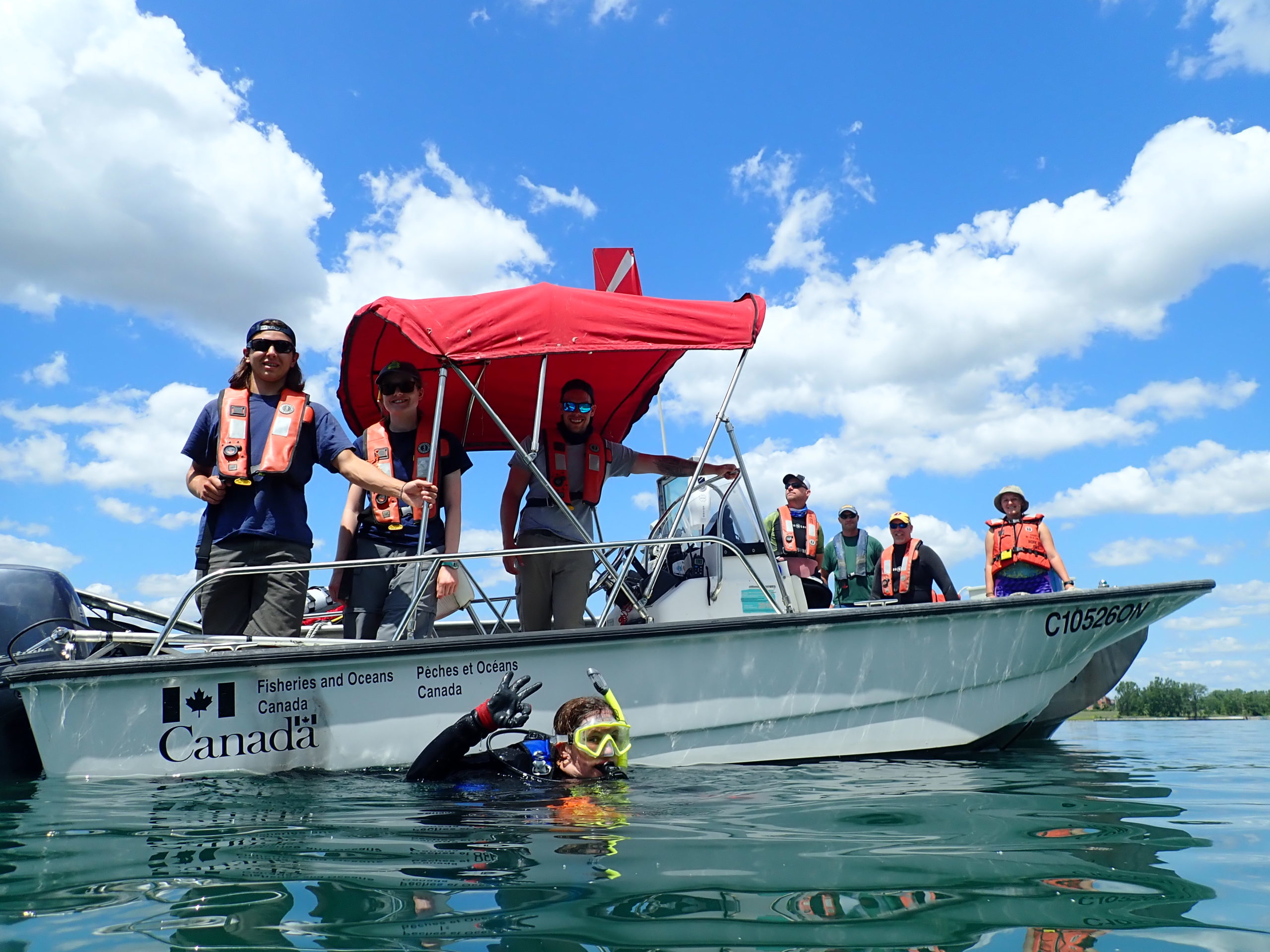
Researchers from Central Michigan University, the Michigan Department of Natural Resources, and Fisheries and Oceans Canada sampled mussels together in the Detroit River. (Photo Credit: Shay Keretz / Central Michigan University’s Institute for Great Lakes Research)
Based on Keretz’s research, it appears some coexistence between native mussels and non-native zebra and quagga mussels is possible, even if it is limited.
“Eleven of the 28 historical species (40%) are still persisting in the Detroit with at least one species showing recruitment (the process of small, young individuals transitioning to an older, life stage),” said Keretz. “Not all hope is lost for native mussels in the Detroit River and perhaps, with the right conditions and refuge space, native, freshwater mussels can co-exist with zebra and quagga mussels in this river and potentially other large river systems.”
The Detroit River will be remediating up to 6 million cubic yards of contaminated sediment, and partners have been restoring critical habitats like Belle Isle, Stoney Island, Celeron Island, Sugar Island and more. Will this contaminated sediment remediation and habitat restoration help native mussels?
“If these areas targeted for rehabilitation are where our habitat models suggest living unionids may exist, it is critical that they are surveyed and any living unionids relocated prior to when dredging or habitat alteration begins,” said Keretz. “If rehabilitation is done properly, as in surveys and relocating any native, freshwater mussels from these areas before the work begins, I think the Detroit River sediment and habitat remediation projects could provide healthier habitats for these native mussels, but this must be confirmed with data. The created and restored shoals and embayment habitats that have been created off Stony Island and Celeron Island, could double as mussel refuge space, in addition to the intended fish nurseries.”
North America hosts the highest diversity of freshwater mussels in the world, but as noted above, they are also the most imperiled group of animals on the continent.
“Conserving biodiversity like this is important because each freshwater mussel contributes something to our ecosystem, services like water filtration and nutrient cycling,” said Keretz. “These native mussels are providing these services for free (like tiny wastewater treatment plants) and in a different way than the short-lived invasive species.”
John Hartig is a board member at the Detroit Riverfront Conservancy. He serves as a Visiting Scholar at the University of Windsor’s Great Lakes Institute for Environmental Research and has written numerous books and publications on the environment and the Great Lakes. Hartig also helped create the Detroit River International Wildlife Refuge, where he worked for 14 years as the refuge manager.
Catch more news at Great Lakes Now:
Great Lakes Moment: Rewilding Metropolitan Detroit
River otters return to the Detroit River
Featured image: Central Michigan University researchers collected native freshwater mussels from the Detroit River. (Photo Credit: Shay Keretz / Central Michigan University’s Institute for Great Lakes Research)


